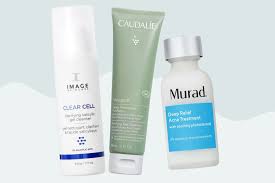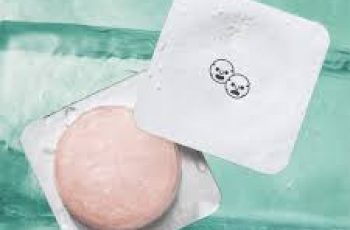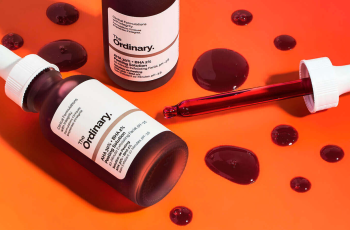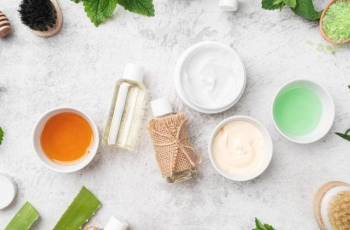
.webp)
.webp)
.webp)
Can You Use Salicylic Acid Over Primer? Everything You Need to Know
.webp)
.webp)
It’s no secret that a good skincare routine affects how your makeup looks, feels, and lasts. But what happens when powerful skincare ingredients meet makeup essentials like primer?
.webp)
.webp)
.webp)
We often get asked whether salicylic acid can be applied over primer—or how these two interact. The short answer is: not quite, but there’s nuance to it.
.webp)
.webp)
Let’s break it down and explain how to pair salicylic acid with your makeup—without causing irritation, pilling, or breakouts.
.webp)
.webp)
.webp)
What Is Salicylic Acid and How Does It Work?
.webp)
.webp)
Salicylic acid is a beta hydroxy acid (BHA) that’s famous for fighting acne and clearing pores. It’s oil-soluble, meaning it penetrates deeper than many other acids.
.webp)
.webp)
.webp)
Here’s what makes salicylic acid so powerful:
.webp)
.webp)
It exfoliates dead skin cells, revealing brighter skin.
.webp)
.webp)
.webp)
It enters pores to dissolve excess sebum and trapped debris.
.webp)
.webp)
It helps reduce the size of blemishes and speeds up healing.
.webp)
.webp)
.webp)
It has anti-inflammatory and antibacterial properties.
.webp)
.webp)
It smooths texture and improves skin tone.
.webp)
.webp)
.webp)
Because of its deep-penetrating nature, salicylic acid is especially loved by those with oily or acne-prone skin.
.webp)
.webp)
You’ll find it in cleansers, serums, spot treatments, exfoliating pads, and even some moisturizers.
.webp)
.webp)
.webp)
Should You Apply Salicylic Acid Over Primer?
.webp)
.webp)
No—salicylic acid should never be applied over primer. It’s designed to be used on clean skin, typically after cleansing and before applying moisturizers or makeup.
.webp)
.webp)
.webp)
Applying salicylic acid over primer creates a barrier that stops the acid from absorbing into your skin. This defeats its purpose and might cause your products to pill or sit unevenly.
.webp)
.webp)
So, instead of layering acid over primer, apply your salicylic acid during your skincare routine—before makeup application begins.
.webp)
.webp)
.webp)
Can You Use Makeup Over Salicylic Acid?
.webp)
.webp)
Yes, applying makeup after salicylic acid is absolutely fine, as long as you use it correctly.
.webp)
.webp)
.webp)
Here are some tips to make it work seamlessly:
.webp)
.webp)
Wait at least 5–10 minutes after applying salicylic acid to let it absorb.
.webp)
.webp)
.webp)
Follow with a moisturizer or hydrating primer to restore balance.
.webp)
.webp)
Choose makeup products that are non-comedogenic to prevent clogged pores.
.webp)
.webp)
.webp)
Salicylic acid may even help your makeup stay in place longer, since it reduces oiliness and smooths skin texture.
.webp)
.webp)
How to Apply Salicylic Acid in Your Skincare Routine
.webp)
.webp)
.webp)
The best time to apply salicylic acid is after cleansing and before moisturizing. Here’s a simple morning routine:
.webp)
.webp)
Cleanse with a gentle face wash.
.webp)
.webp)
.webp)
Apply a salicylic acid toner or serum.
.webp)
.webp)
Follow with a hydrating serum (optional).
.webp)
.webp)
.webp)
Apply moisturizer.
.webp)
.webp)
Use a broad-spectrum SPF.
.webp)
.webp)
.webp)
Apply primer and makeup.
.webp)
.webp)
Let each layer absorb before moving to the next. This reduces product pilling and irritation.
.webp)
.webp)
.webp)
Can You Use Primer If You Have Acne-Prone Skin?
.webp)
Yes, primer can be incredibly helpful for acne-prone skin. It creates a smooth base, helps makeup last longer, and prevents product from settling into pores.
In fact, many people with acne find primer is better than moisturizer before makeup—especially if the primer is oil-free and lightweight.
However, not all primers are skin-friendly.
Watch Out For:
Heavy silicones: They can trap oil, sweat, and bacteria in pores.
Fragrance or alcohol: These can trigger irritation or breakouts.
Comedogenic ingredients: These may clog pores and worsen acne.
Instead, opt for non-comedogenic primers labeled for oily or acne-prone skin. Many even contain ingredients like niacinamide or tea tree oil to help calm breakouts.
How to Pair Salicylic Acid and Primer in Your Routine
Here’s the correct order:
Apply salicylic acid (cleanser, toner, or serum).
Allow 5–10 minutes for it to absorb.
Follow with a light moisturizer if needed.
Apply your makeup primer.
Continue with foundation and the rest of your makeup.
This sequence ensures your skin gets the benefits of salicylic acid, while your makeup stays smooth and long-lasting.
Is It Better to Use Salicylic Acid in the Morning or Night?
Both can work—depending on your skin’s needs and how your routine is structured.
Morning Use:
Helps control oil throughout the day.
Prepares skin for smooth makeup application.
Should always be followed with SPF 30 or higher.
Evening Use:
Works while your skin rests overnight.
Reduces concerns about sun sensitivity.
Can be paired with calming or hydrating products.
If you use strong actives like retinol, alternate nights with salicylic acid to avoid over-exfoliating.
Should I Avoid Moisturizer if I Have Oily Skin?
No—even oily skin needs hydration. Skipping moisturizer can backfire, making your skin overproduce oil to compensate.
The trick is to use the right kind of moisturizer:
Look for lightweight, gel-based formulas.
Choose oil-free or non-comedogenic labels.
Use moisturizers with niacinamide, ceramides, or hyaluronic acid.
These keep your skin balanced, healthy, and more resilient to irritation caused by active ingredients like salicylic acid.
Best Ways to Prevent Foundation from Clogging Pores
Even with the right skincare, foundation can sometimes cause breakouts. Here are a few tips to avoid this:
Use lightweight or mineral-based foundations that are non-comedogenic.
Avoid layering too many heavy products underneath.
Use a damp sponge to build coverage instead of layering thickly.
Always double cleanse to remove makeup completely.
Incorporate exfoliants like salicylic acid 2–3 times a week.
Proper removal is just as important as what you put on your skin.
How to Remove Makeup Without Clogging Your Pores
Makeup wipes don’t clean your skin thoroughly—they smear makeup around. Instead, follow this routine:
Use an oil-based cleanser or balm to break down foundation and sunscreen.
Follow with a gentle foaming cleanser to remove residue.
Pat dry and apply a toner or exfoliant, such as a salicylic acid toner.
Finish with hydrating serums and a moisturizer.
This method, called double cleansing, ensures your pores are clear and your skin is refreshed.
Is It Normal to Break Out After Using Salicylic Acid?
Yes, some initial purging is normal. This can happen when salicylic acid starts clearing debris deep in your pores.
You may notice small breakouts, especially around congested areas. This is usually temporary and clears up within 2–4 weeks.
If breakouts worsen or your skin becomes red and flaky, reduce usage and consult a dermatologist.
What Should You Avoid Using With Salicylic Acid?
Salicylic acid is potent, and combining it with other strong actives may irritate your skin.
Avoid layering it directly with:
Retinoids (unless alternating by day or night)
Vitamin C (can destabilize and cause irritation)
Benzoyl Peroxide (too drying when used together)
AHAs like glycolic acid (can over-exfoliate)
Use a simplified routine when starting out, and slowly introduce new ingredients.
Conclusion: Can You Use Salicylic Acid Over Primer?
No—you should never apply salicylic acid over primer. It must be applied on clean, dry skin, before primer or makeup, to work effectively.
However, you can—and should—apply makeup and primer after salicylic acid, once it’s fully absorbed.
With the right layering technique, you’ll enjoy:
Smoother makeup application
Fewer breakouts
Long-lasting wear
Healthier skin overall
Final Tips for Success
Start with lower concentrations of salicylic acid (0.5–2%) if you’re new.
Use once a day or every other day until your skin adjusts.
Follow with a hydrating product and sunscreen.
Always remove makeup thoroughly before bed.
Choose primers and makeup labeled non-comedogenic.



